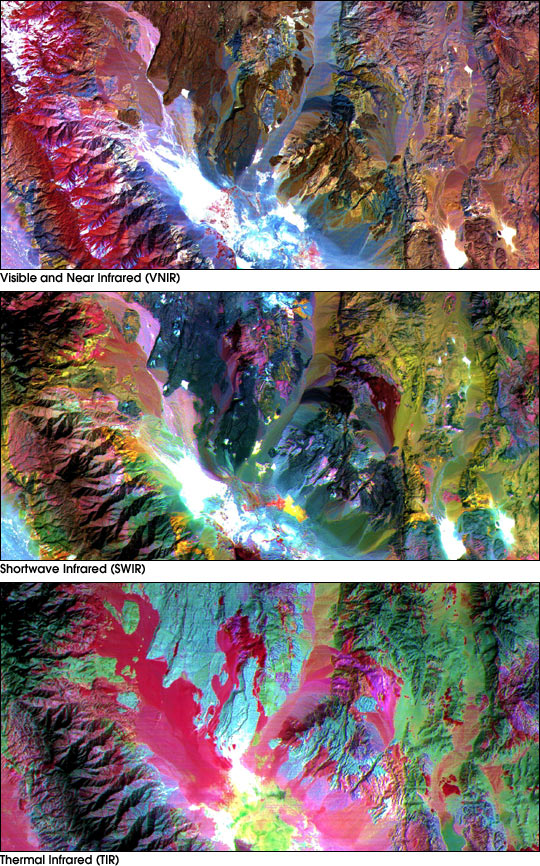


15 meter resolution Visible and Near Infrared image (1.2 MB)
30 meter resolution Shortwave Infrared image (1 MB)
90 meter Thermal Infrared image (628 KB)
These images of the Saline Valley area, California, were acquired March 30, 2000, by the Advanced Spaceborne Thermal Emission and Reflection Radiometer (ASTER). ASTER is the highest resolution instrument aboard NASA's Terra satellite. The images cover a full ASTER scene (60 by 60 km). Each image displays data from a different spectral region, and illustrates the information gained by looking at the Earth’s surface in different wavelengths of light. The top image displays visible and near infrared bands 3 (.81µm), 2 (.56µm), and 1 (.66µm) in red, green, and blue (RGB). Vegetation appears red, snow and dry salt lakes are white, and exposed rocks are brown, gray, yellow, and blue. Rock colors mainly reflect the presence of iron minerals, and variations in albedo. The middle image displays short wavelength infrared bands 4 (1.65µm), 6 (2.205µm), and 8 (2.33µm) as RGB. In this wavelength region, clay, carbonate, and sulfate minerals have unique absorption features, resulting in distinct colors in the image. For example, limestones are yellow-green, and purple areas are kaolinite-rich (kaolinite is a clay mineral). The bottom image displays thermal infrared bands 13 (10.6µm), 12 (9.1µm) and 10 (8.3µm) as RGB. In these wavelengths, variations in quartz content are more or less red; carbonate rocks are green, and mafic volcanic rocks are purple (mafic rocks have high proportions of elements like magnesium and iron). ASTER’s ability to identify different types of rock and soil from space using thermal infrared wavelengths of light is one of its unique capabilities.
Image courtesy NASA, GSFC, MITI, ERSDAC, JAROS, and the U.S./Japan ASTER Science Team.